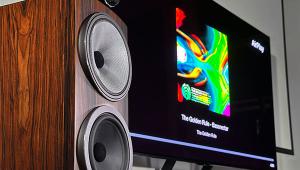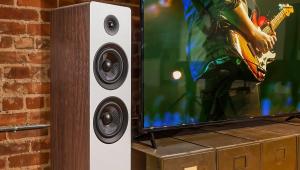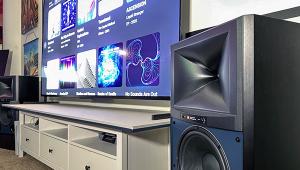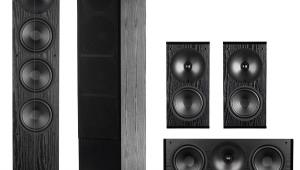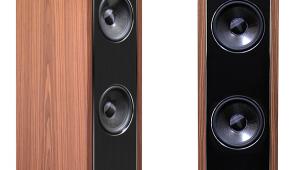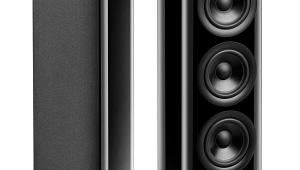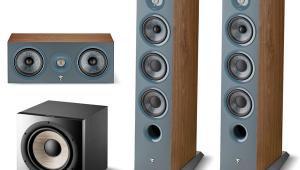GoldenEar Technology Triton One.R Loudspeaker Review
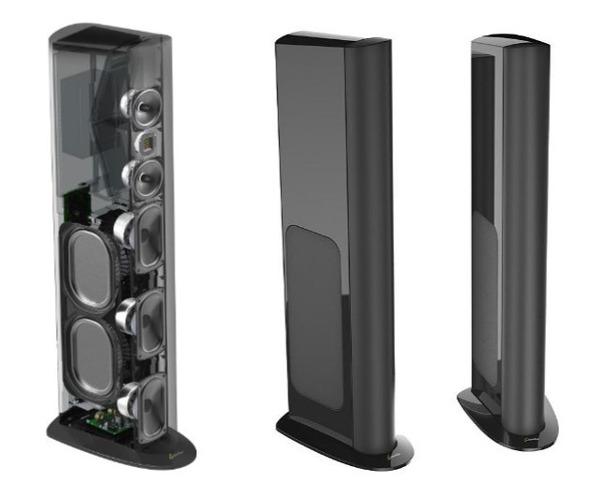
AT A GLANCE
Plus
Powerful, full-range sound
Reasonably compact form factor
Excellent value
Minus
Nothing major
THE VERDICT
GoldenEar Technology’s scaled-down version of its Triton Reference delivers similar full-range performance as the company’s flagship speaker but does so at an even more reasonable price.
GoldenEar Technology’s Triton Reference, a model I reviewed in April of last year, was the result of a value-oriented audio brand throwing caution to the wind to produce a cost-no-object loudspeaker. Even so, since we’re dealing with GoldenEar Tech here, the Triton Reference ended up priced at $8,498/pair—not exactly cheap, but well below what you’d pay for the flagship efforts of other speaker brands.
A regular rotation of speakers passes through my doors, but the Triton Reference is the one I was truly sorry to ship back—its powerful, full-range sound and sophisticated cosmetics gave clear indication that co-founders Sandy Gross and Don Givogue were capable of successfully stepping up their game while managing to keep costs in check. For that reason, when GoldenEar Tech asked if I wanted to spend time with its latest creation, a scaled-down $5,998/pair version of their flagship called the Triton One.R, I jumped at the chance.
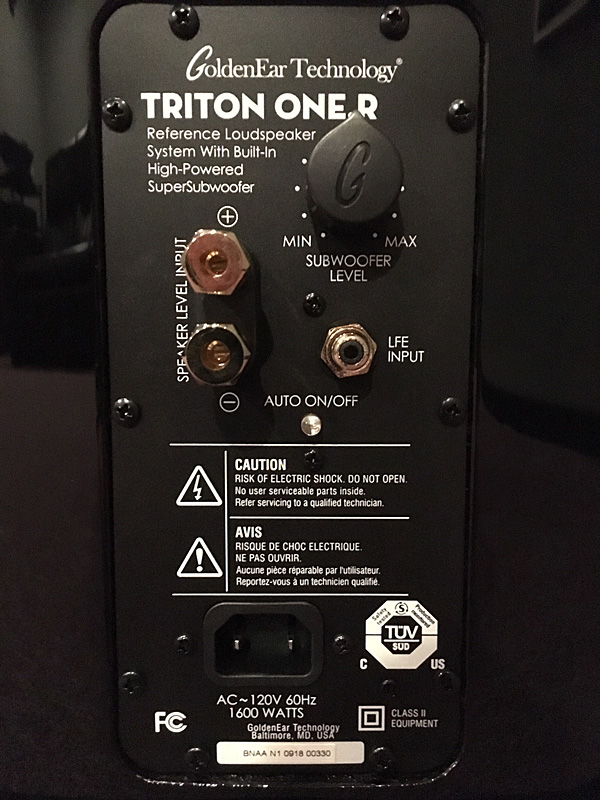
Standing 54 inches tall, the Triton One.R is four inches shorter than its big brother, and the other dimensions have been pared down as well to create a more compact model than the towering Triton Reference. That said, this is very much a full-range speaker, with frequency response down to 13 Hz according to GoldenEar’s tech specs. And while many other full-range tower speakers require heavy lifting from an attached amplifier, the Reference One.R’s rated 8-ohm impedance and 92 dB sensitivity mean you can use it with even modest integrated amps and receivers. Also like its big brother, the One.R has a built-in subwoofer section—this one with three 5 x 9-inch active bass drivers powered by a 1,600-watt DSP-controlled digital amplifier. The sub’s output is augmented by four 7 x 10-inch passive radiators, two of them mounted on each cabinet side to balance out movement.
The Triton One.R uses the the same High-Velocity Folded Ribbon (HVFR) tweeter as the one found in the Triton Reference. A revamped design with 50 percent more neodymium magnet material than the tweeter units found on earlier speakers from the company, this next-gen HVFR offers improved efficiency and power handling. Rounding out the speaker’s driver complement is a pair of 5.25-inch upper bass/midrange drivers. According to GoldenEar Tech, fine tweaks including a “balanced” crossover configuration, a reworked internal speaker wire topology, and the use of high-quality capacitors all make a contribution to the speaker’s sound quality. Last but not least, the One.R was voiced by the company to mimic the performance of the larger Reference tower.

Whereas the Reference’s large size made it a visually overpowering element in my near-3,000 cubic foot listening room, the One.R’s reduced scale was more to my liking. As with the company’s other tower models, the cabinet tapers in dramatically from back to front, which gives it a slim, streamlined appearance when viewed face-on but also serves to minimize diffraction effects. A very welcome carryover from the Reference is the One.R’s piano black lacquer-coated medite cabinet. This gives the speaker a solid look and is also, according to GoldenEar Tech, “engineered with the goal of making it as non-resonant and inert as possible.”
Features and Setup
The Triton One.R’s lower back features a panel with gold-plated cable connections plus an RCA jack to provide a subwoofer LFE input option when the speaker is used for surround sound applications. There’s also a level knob and an IEC power connection. Four rubber-coated levelling feet are included with each speaker, and there are also metal carpet spikes and discs for use on wooden floors.
Initial positioning of the speakers for best sound in my room was carried out by Sandy Gross himself. While Sandy’s setup favored a tightly angled arrangement for optimal imaging, I later nudged the towers out into a less restrictive formation, one that widened the soundstage a bit but still maintained a solid stereo image. The speakers were placed at a one-foot distance from the room’s back wall and a nine-foot distance from my listening position.
Associated gear used for my main evaluation included a 2 x 150-watt Hegel Music Systems H190 integrated amplifier, an Elac Discovery music server streaming Tidal and stored FLAC files via Roon music management software, a Pioneer BDP-88FD universal disc player, and Nordost Purple Flare speaker cables and interconnects. For the home theater part of my test, I placed the One.R towers in a system consisting of a GoldenEar Technology SuperSat 50C center channel speaker and Triton Two tower speakers for the rear channels, an Anthem AVM-50v surround preamp/processor, a Sunfire Cinema Grand multichannel amplifier, and an Oppo UDP-203 UHD Blu-ray disc player.


